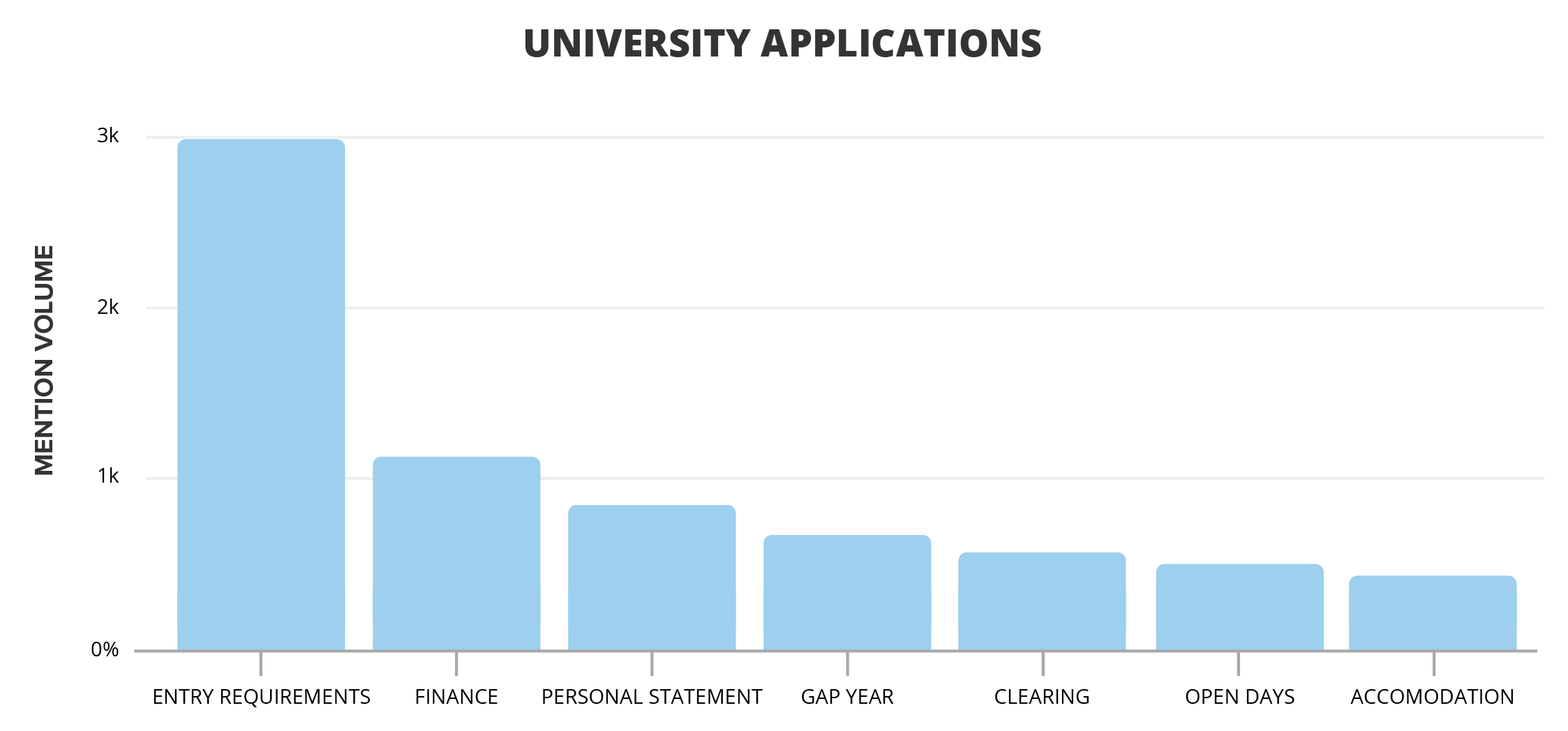Analyzing Prospective Student Conversations with Social Data
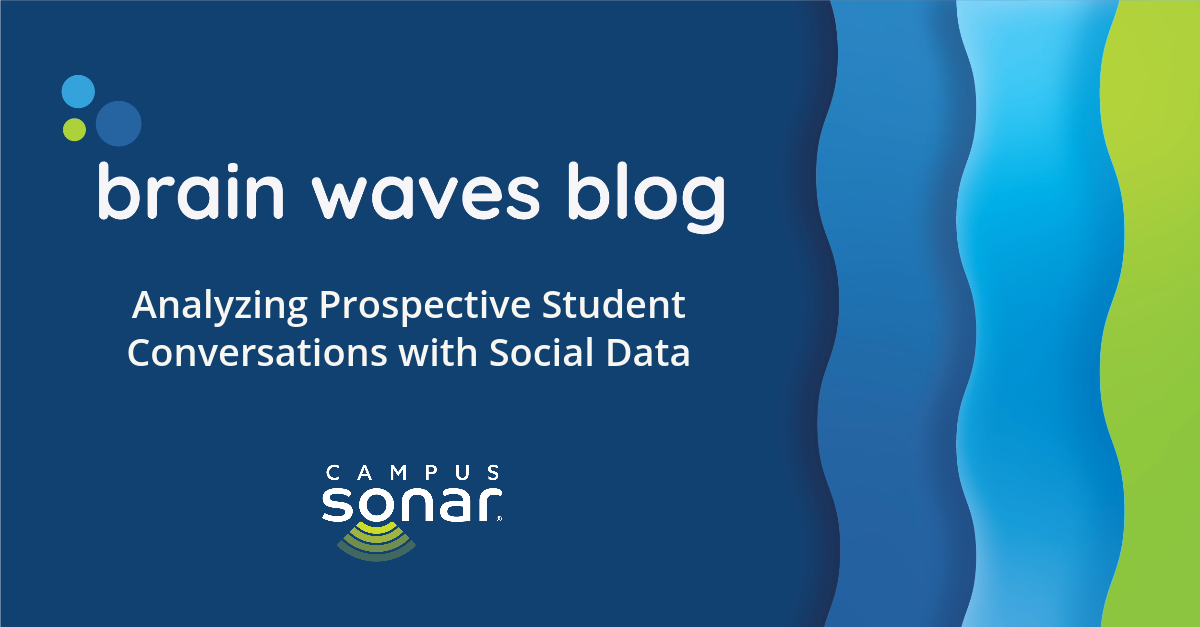
When you’re recruiting prospective students, you want to know what they’re saying about your university. One way you can learn what students are saying is through traditional audience research methods, social audience intelligence, or a combination of both. The research analysts at Brandwatch used social data to learn more about prospective student conversations surrounding applying to college.
A social intelligence solutions provider, Brandwatch’s analysts used social data that they’d collected over a year. They analyzed conversations from prospective students who demonstrated their intent to apply to or attend one of the top 20 universities in the United Kingdom. Specifically, the analysts used college search and consideration language to look for names of the top 20 universities along with first-person pronouns and phrases like “apply to” and “go to.”
With approximately 400 conversations per week, the analysts had plenty of data to work with. Some of their research questions included:
- What do prospective students talk about?
- What concerns and worries do prospective students have?
- When and where do prospective students have these conversations?
With a data set that approached 20,000 conversations, they used qualitative research methods to identify emerging themes, including entry requirements, finance, and personal statements. The analysts used software to create and automate rules and tags to sort all 20,000 individual mentions into themes by frequency.
Number of mentions within each category of conversations.
To learn more about these categories, they visualized the topics in a word cloud, with color-coding based on positive, neutral, or negative sentiments.
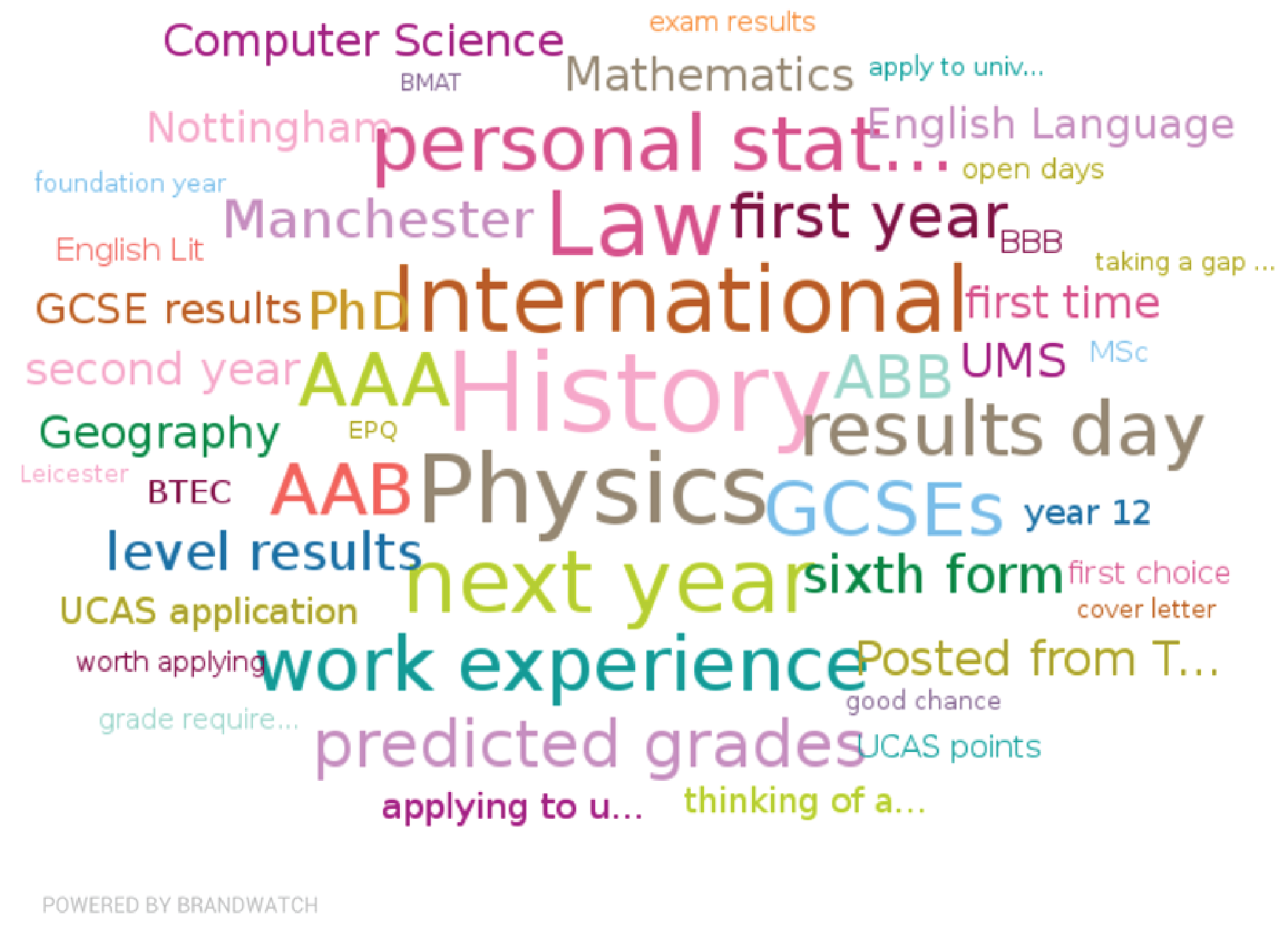
The types of conversations that occurred about entry requirements, shown in a word cloud.
The same data that was represented in the word cloud was also viewed as a table or line graph, or even as a growth chart to determine the emerging and timely topics, and the topics that were fading.
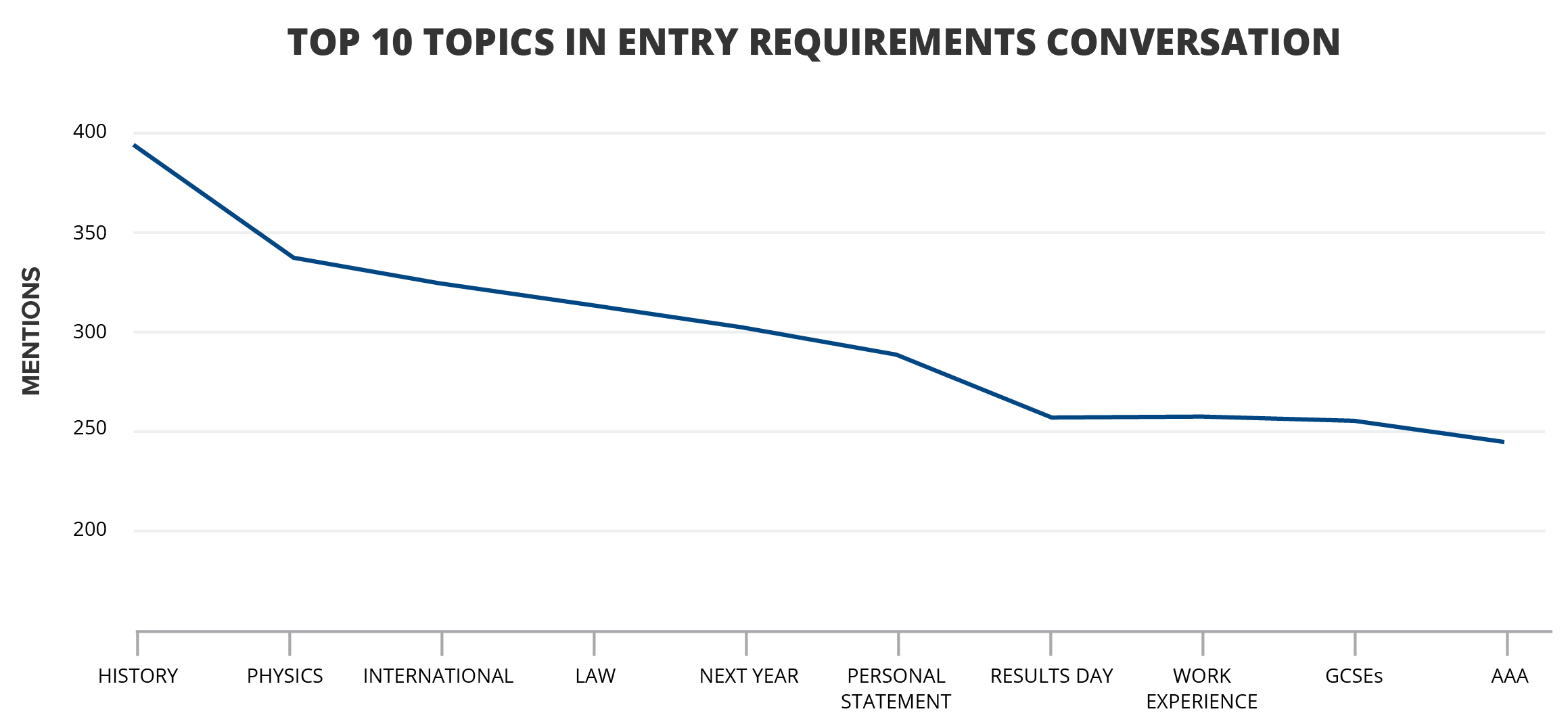
Number of conversations based on entry requirement topic, shown in a line graph.
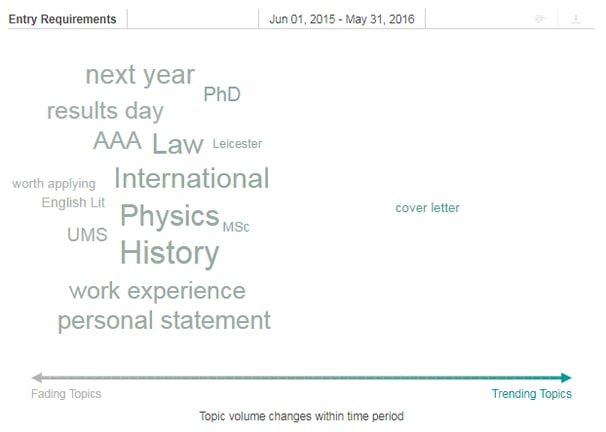
The growth chart shows the topic volume changes within a specific time period.
Creating Actionable Outcomes
This research was conducted by a software company, not a university. If campus professionals conducted this analysis, the results could inform a traditional research project, or they could be used right away to inform the content strategy for the admissions office. In online conversations, students spoke positively about the day they received results from their A-level exams, so a campus could create branded content to help them celebrate getting their results. To address questions about finances and personal statement requirements, the marketing team might update the website and other content to specifically address some of the students’ concerns.
Another actionable outcome of this research could be an improved social media engagement strategy for the enrollment/admissions comm flow. While Student Room and Twitter were the top two sites for these sorts of conversations, other sources popped up as well, including the forums on Money Saving Expert and The Grad Cafe. Armed with this information, admissions counselors could actively participate in those forums and increase their engagement levels with prospective students.
More Social Data Research
Social data provides real-time insight that traditional research methods just don’t offer. As Liz Gross explains in The Higher Ed Social Listening Handbook, social listening is fast, flexible, longitudinal, and human.

